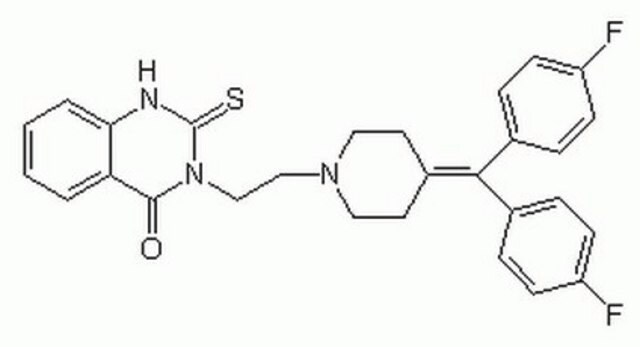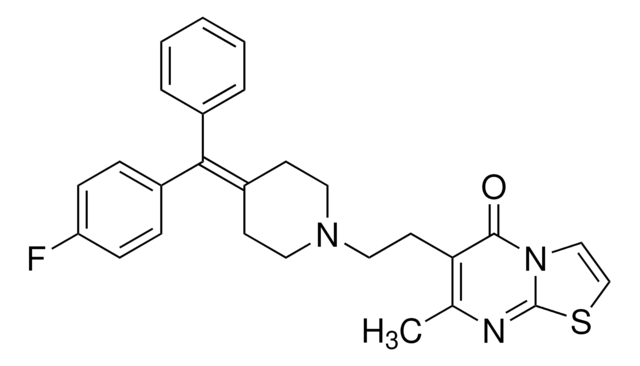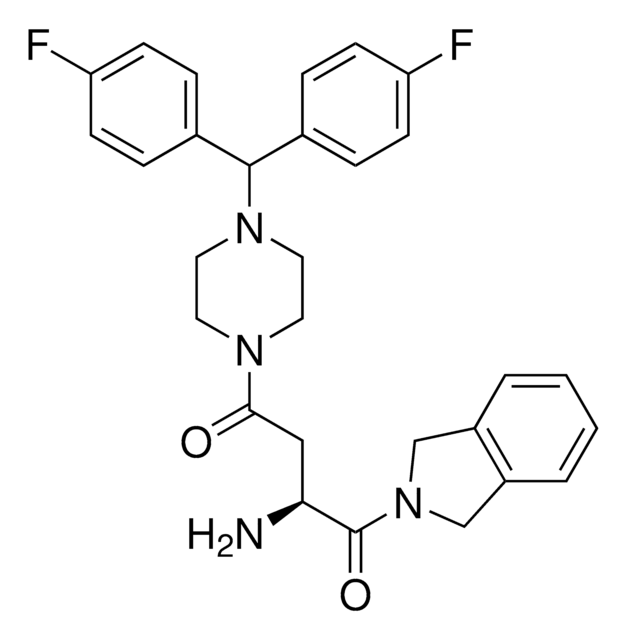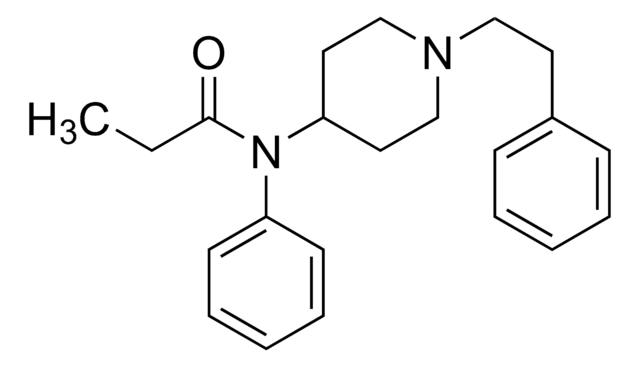D5794
Diacylglycerol Kinase Inhibitor II
solid
Sinónimos:
3-[2-[4-(bis(4-Fluorophenyl)methylene)-1-piperidinyl]ethyl]-2,3-dihydro-2-thioxo-4(1H)-quinazolinone, R59949
About This Item
Productos recomendados
origen biológico
synthetic (organic)
Nivel de calidad
Ensayo
≥97% (HPLC)
Formulario
solid
color
pale yellow
mp
228-230 °C
solubilidad
0.1 M HCl: slightly soluble
0.1 M NaOH: slightly soluble
DMSO: soluble
H2O: insoluble
ethanol: soluble
ethyl acetate: soluble
temp. de almacenamiento
−20°C
cadena SMILES
Fc1ccc(cc1)\C(=C2\CCN(CCN3C(=S)Nc4ccccc4C3=O)CC2)c5ccc(F)cc5
InChI
1S/C28H25F2N3OS/c29-22-9-5-19(6-10-22)26(20-7-11-23(30)12-8-20)21-13-15-32(16-14-21)17-18-33-27(34)24-3-1-2-4-25(24)31-28(33)35/h1-12H,13-18H2,(H,31,35)
Clave InChI
ZCNBZFRECRPCKU-UHFFFAOYSA-N
Aplicación
Acciones bioquímicas o fisiológicas
Características y beneficios
Código de clase de almacenamiento
11 - Combustible Solids
Clase de riesgo para el agua (WGK)
WGK 3
Equipo de protección personal
dust mask type N95 (US), Eyeshields, Gloves
Elija entre una de las versiones más recientes:
¿Ya tiene este producto?
Encuentre la documentación para los productos que ha comprado recientemente en la Biblioteca de documentos.
Nuestro equipo de científicos tiene experiencia en todas las áreas de investigación: Ciencias de la vida, Ciencia de los materiales, Síntesis química, Cromatografía, Analítica y muchas otras.
Póngase en contacto con el Servicio técnico







